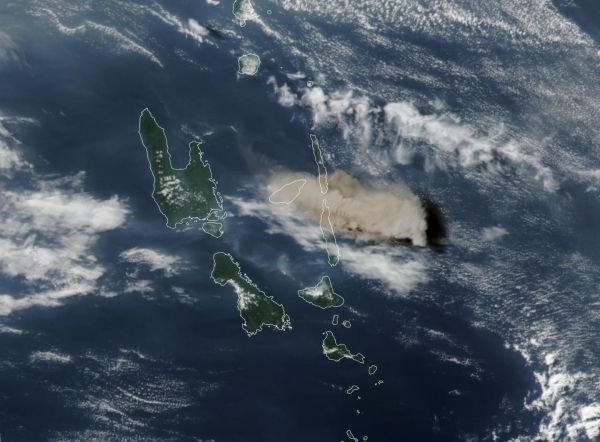The Manaro Voui volcano on the island of Ambae in the nation of Vanuatu in the South Pacific Ocean made the 2018 record books. A NASA-NOAA satellite confirmed Manaro Voui had the largest eruption of sulfur dioxide that year.
The volcano injected 400,000 tons of sulfur dioxide into the upper troposphere and stratosphere during its most active phase in July, and a total of 600,000 tons in 2018. That’s three times the amount released from all combined worldwide eruptions in 2017.
During a series of eruptions at Ambae in 2018, volcanic ash also blackened the sky, buried crops and destroyed homes, and acid rain turned the rainwater, the island’s main source of drinking water, cloudy and “metallic, like sour lemon juice,” said New Zealand volcanologist Brad Scott. Over the course of the year, the island’s entire population of 11,000 was forced to evacuate.
At the Ambae volcano’s peak eruption in July, measurements showed the results of a powerful burst of energy that pushed gas and ash to the upper part of the troposphere and into the stratosphere, at an altitude of 10.5 miles. Sulfur dioxide is short-lived in the atmosphere, but once it penetrates into the stratosphere, where it combines with water vapor to convert to sulfuric acid aerosols, it can last much longer — for weeks, months or even years, depending on the altitude and latitude of injection, said Simon Carn, professor of volcanology at Michigan Tech.
Read more at NASA/Goddard Space Flight Center
Image: The natural-color image above was acquired on July 27, 2018, by the Visible Infrared Imaging Radiometer Suite (VIIRS) on Suomi NPP. (Credit: Image by Lauren Dauphin, NASA Earth Observatory.)


